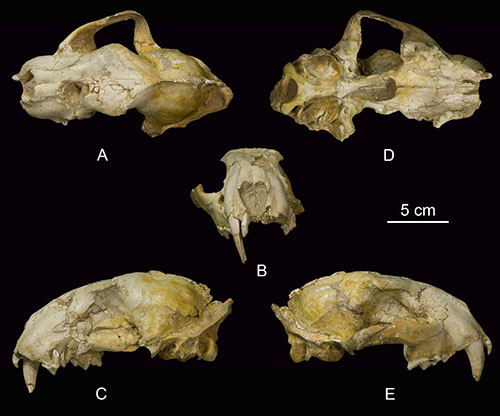Cats are the most specialized category of carnivores. Their typical characteristics are: retractable claws, short blunt snout, well-developed canine teeth and cleft teeth, and tooth degeneration after the cleft teeth. According to the current fossil record, the earliest cat was Proailurus, which appeared in Eurasia at the end of the Oligocene and the beginning of the Early Miocene. Subsequently, cats experienced rapid radiation evolution. By the end of the Miocene, It spread to other continental areas except Australia, Antarctica, and South America. After the formation of the Isthmus of Panama in the Pliocene, it quickly invaded South America. Today, there are approximately 14 genera and 37 species of cats living today.
Traditionally, cats are divided into two major categories: one is conical-toothed cats, including all living and related fossil species; the other is the extinct saber-toothed cats (saber-toothed cats). toothed cats), such as the well-known Machairodus, Homotherium, Megantereon, and the star species of the Ice Age, Smilodon. Typical saber-tooth cats have long, flattened, dagger- or scimitar-shaped upper canines, as well as special joint structures that can open the upper and lower jaws to a wide angle. However, in the early evolution process, some intermediate types with moderately developed upper canine teeth and flat sides, unspecialized upper and lower jaw joint structures, and close to living cats appeared widely in Eurasia. Paramachaerodus and Promegantereon belong to this type. The fossils of these two genera are mainly found in the strata of the Late Miocene of Eurasia and are indicative fossils of the Late Miocene fauna. Their research is useful for determining the age and cross-regional comparison of fauna and the origin of the feline saber-toothed cat. Significance. For a long time, a considerable number of scholars believed that the difference between the two genera was not obvious and that they might be the same genus. Other scholars hold the opposite view and support the validity of the two genera. This controversy, which has lasted for many years, has had an impact on the smooth research of this series of taxa.
Recently, Li Yu, a doctoral candidate under the supervision of researcher Qiu Zhanxiang of the Institute of Vertebrate Paleontology and Paleoanthropology, Chinese Academy of Sciences, and Professor Nikolai Spassov, director of the National Museum of Natural History of Bulgaria, conducted research on the Late Middle Ages from the Shilei site in Linxia Basin, Gansu, China, and the Hadjidimovo-1 site in southwestern Bulgaria. Several pieces of feline fossil material found in Pliocene strata were studied collaboratively. Comparative studies show that the morphological characteristics of the new materials from the two locations are very similar. Research on the associated mammalian fossil groups shows that the new materials are of similar stratigraphic age and should represent a new species of the genus Parasabertooth cat in the family Felidae. This species is found in East Asia (China) and southeastern Europe (Bulgaria) shows that this species has a wide geographical distribution range and can adapt to a variety of habitats, so it was named Paramachaerodus transasiaticus sp. nov. Detailed morphological comparison and phylogenetic analysis showed that the new species has mixed characteristics of Parasaberodon and Protozoon genus, and is in the middle of evolution. This further proves the continuity of the distribution of characteristics of these two groups. It is classified as The same genus is more appropriate, and the genus name Parasabertooth takes precedence. So far, the genus Parasabertooth includes four consecutive valid species: P. ogygia, P. orientalis, P. transasiaticus and P. maximiliani. The discovery of new materials further enriches the fossil record of Parasabertooth Cat, and is also the first discovery of fossils of this genus in the Linxia Basin of China and Bulgaria.
The results were recently published online in Pal? Ontologische Zeitschrift journal. This research was supported by the National Natural Science Foundation of China and the Strategic Priority Program of the Chinese Academy of Sciences.
Original link: https://link.springer.com/article/10.1007/s12542-017-0371-7

Figure 1 Parasaber-toothed tiger skull fossils from the Shilei site in Linxia Basin, Gansu (photo provided by Li Yu)

Figure 2. Parasabertooth mandibular fossils from the Shilei site in Linxia Basin, Gansu (Photo provided by Li Yu)

Figure 3 Parasabertooth upper canine and lower jaw fossils from the Hadjidimovo-1 site in Bulgaria (photo courtesy of Li Yu)

Figure 4 Restored picture of Paramachaerodus transasiaticus sp. nov. (drawn by Velizar Simeonovski)
animal tags: cat evolution fossil
We created this article in conjunction with AI technology, then made sure it was fact-checked and edited by a Animals Top editor.